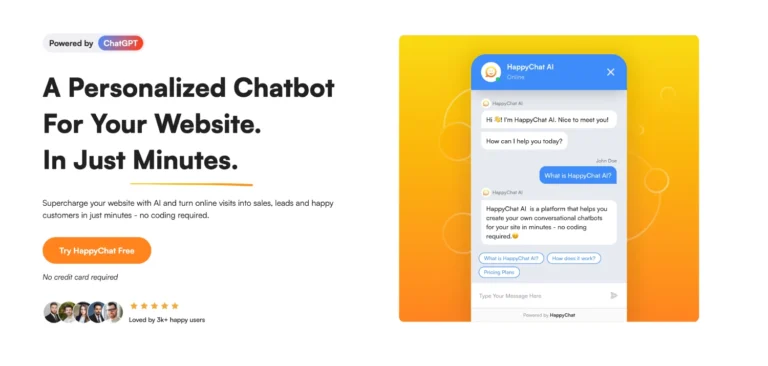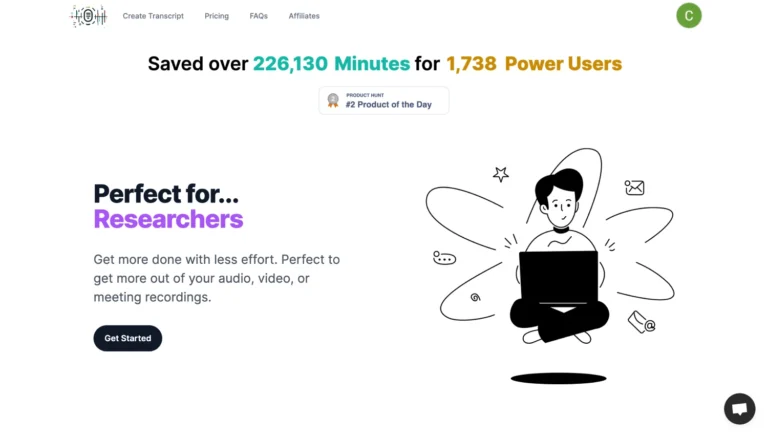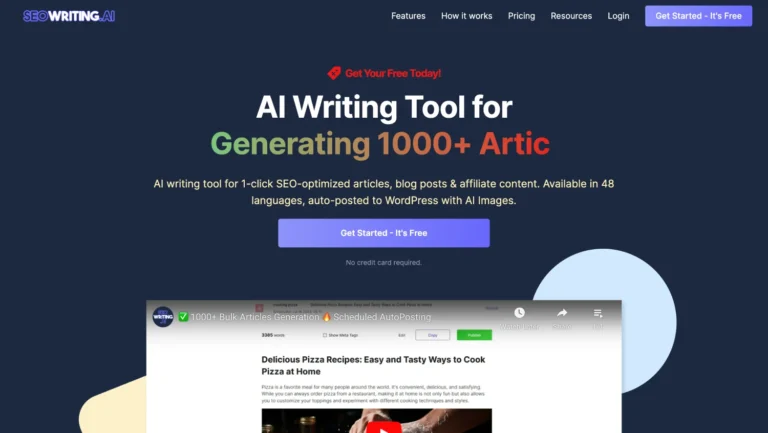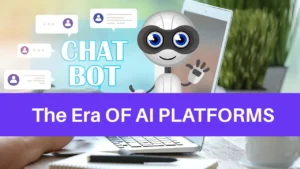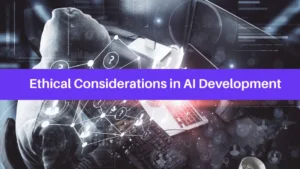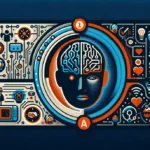Table of Contents
Key Takeaways
| Aspect | AI Assistants | Human Assistants |
|---|---|---|
| Availability | 24/7 operation without fatigue | Limited by work hours and physical stamina |
| Data Processing | Handles large datasets swiftly and accurately | Slower, prone to errors in large datasets |
| Emotional Intellect | Lacks empathy and emotional understanding | Strong in empathy and emotional connection |
| Adaptability | Programmed for specific tasks | Can adapt to a wide range of tasks |
| Cost Efficiency | Cost-effective in the long term | Involves ongoing salaries and benefits |
In the modern business landscape, the rise of AI Assistants has sparked a debate: Can these digital helpers effectively replace human assistants? This article delves into the strengths and limitations of both, offering a comprehensive analysis for businesses considering which option to invest in.
AI Assistants: Revolutionizing Task Management
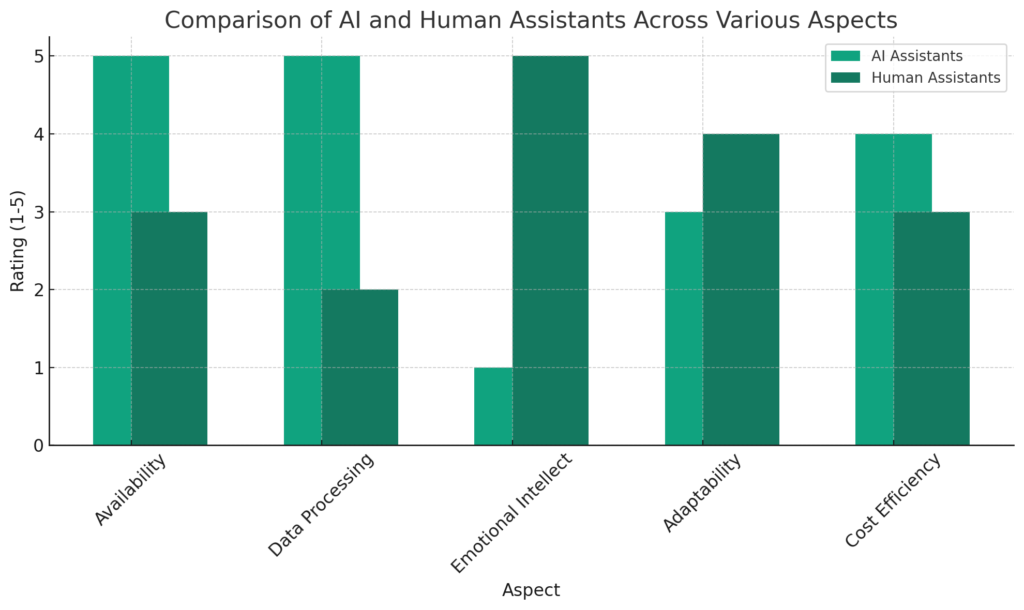
Artificial Intelligence (AI) Assistants have revolutionized how tasks are managed in various sectors. These digital entities, powered by advanced algorithms and machine learning, excel in handling repetitive and data-intensive tasks.
Efficiency in Data Handling
One of the most significant advantages of AI Assistants is their ability to process and analyze large amounts of data swiftly. Unlike human assistants, who may take hours or even days to sift through data, AI tools can accomplish these tasks in a fraction of the time. This efficiency is particularly beneficial in fields like data analysis, where precision and speed are paramount.
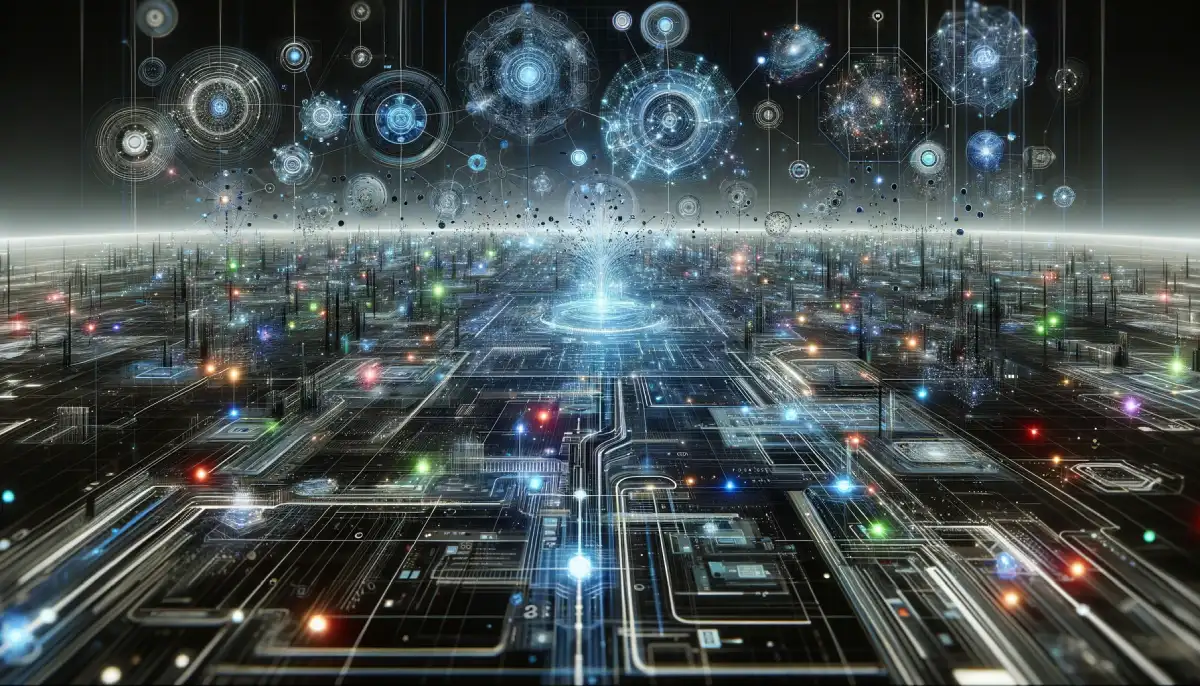
Limitations in Emotional Intelligence
However, AI Assistants lack the emotional intelligence inherent in human assistants. They are unable to provide the empathetic responses and personal touch that many clients and business operations may require. This emotional disconnect can be a significant drawback in industries where building strong, personal relationships are crucial.
Human Assistants: The Personal Touch in Business
Human assistants bring a level of personalization and emotional intelligence that AI cannot replicate. They excel in tasks that require empathy, discretion, and personal judgment.
The Power of Emotional Intelligence
The ability to read emotions, empathize with clients or colleagues, and respond accordingly is where human assistants shine. This emotional intelligence fosters a more personal connection with clients and can be invaluable in negotiations, customer service, and team management.
Challenges in Data Management
Despite their strengths in emotional tasks, human assistants face challenges in handling large volumes of data. They are more prone to errors when processing significant amounts of information and may not match the speed and efficiency of AI tools in data analysis tasks.
This comparison highlights the unique benefits and limitations of both AI and human assistants. For a more in-depth analysis, particularly on AI tools, consider exploring our AI Reviews.
Cost-Effectiveness and Adaptability: AI vs. Human Assistants
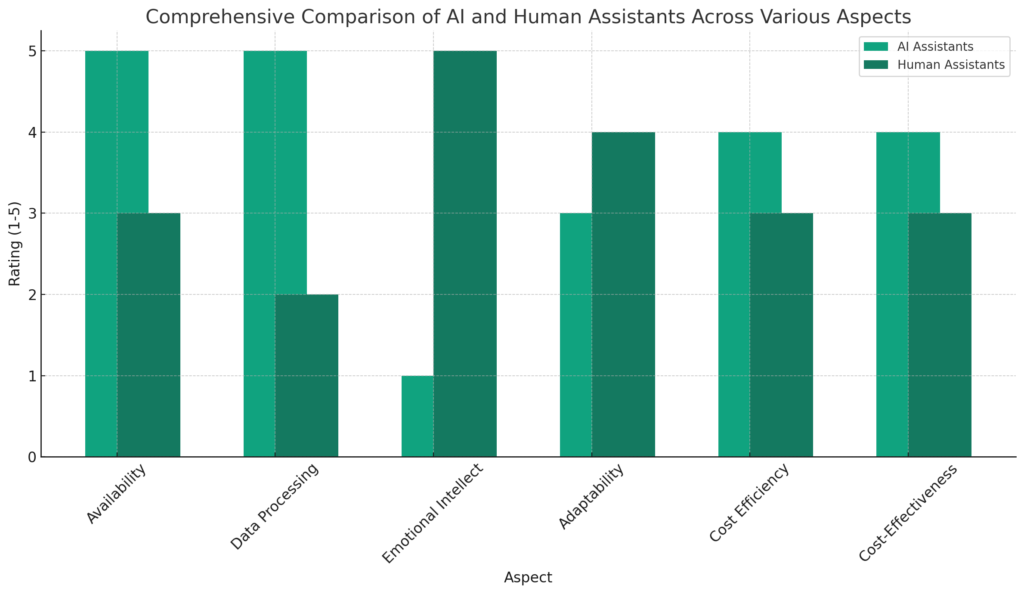
Continuing our exploration into the comparison between AI and human assistants, let’s delve into their cost-effectiveness and adaptability, two critical factors for businesses.
Cost-Effectiveness: Balancing Initial Investment and Long-Term Gains
AI Assistants, while requiring a significant initial investment in technology, can be more cost-effective in the long term. They eliminate ongoing expenses like salaries, benefits, and other employee-related costs. Furthermore, their ability to operate continuously without breaks or downtime ensures constant productivity, a factor that can dramatically reduce operational costs over time.
In contrast, Human Assistants involve regular financial commitments such as salaries, benefits, and training costs. However, their adaptability and the value of personal interaction can often justify these expenses, especially in roles where human touch and decision-making are irreplaceable.
Adaptability: The Human Edge
One of the most prominent advantages of human assistants is their adaptability. They can handle a variety of tasks, respond to unforeseen challenges, and learn new skills. This versatility is particularly beneficial in dynamic business environments where requirements and priorities can shift rapidly.
AI Assistants, on the other hand, are generally designed for specific tasks. While they excel in these areas, they lack the ability to adapt to tasks outside their programmed skill set. This limitation is a significant consideration for businesses with diverse and evolving needs.
Choosing the Right Assistant: A Strategic Decision
The decision to opt for an AI or a human assistant should be based on specific business needs and goals. AI Assistants are ideal for data-driven, repetitive tasks where efficiency and accuracy are paramount. Human assistants are better suited for roles requiring emotional intelligence, personal interaction, and adaptability to a wide range of tasks.
The Future: A Blend of AI and Human Capabilities
Looking ahead, the most effective approach might be a blend of AI and human capabilities. Combining the efficiency and data-processing prowess of AI with the emotional intelligence and adaptability of human assistants can lead to a more balanced and efficient workforce.
For more insights into AI tools and their impact on various industries, don’t forget to check our comprehensive AI Reviews.
Navigating the Integration of AI in the Workforce
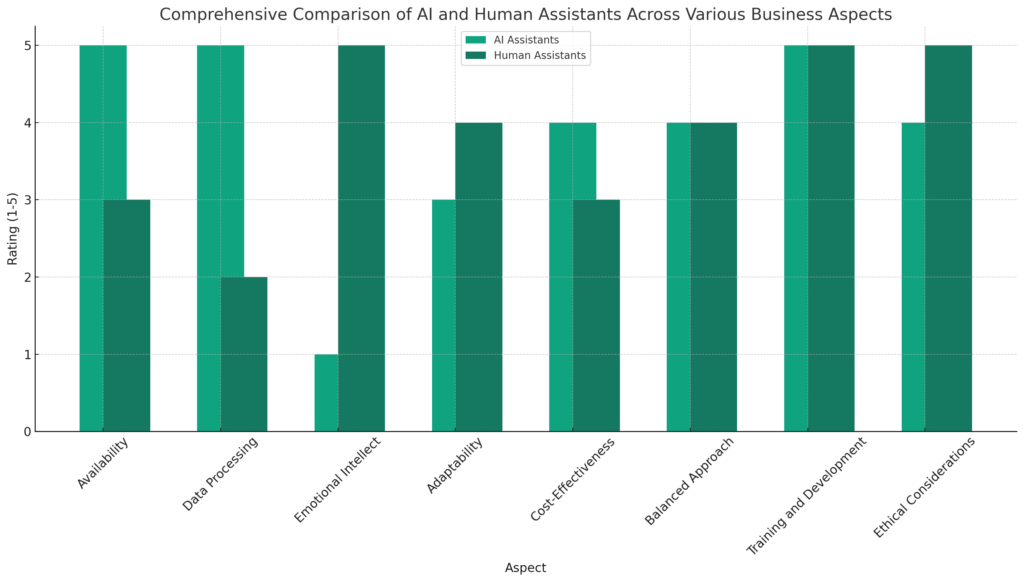
As businesses increasingly adopt AI technologies, it’s crucial to understand how to integrate AI assistants effectively alongside human staff. This integration is not just about replacing human roles but enhancing and complementing them.
Strategies for Effective Integration
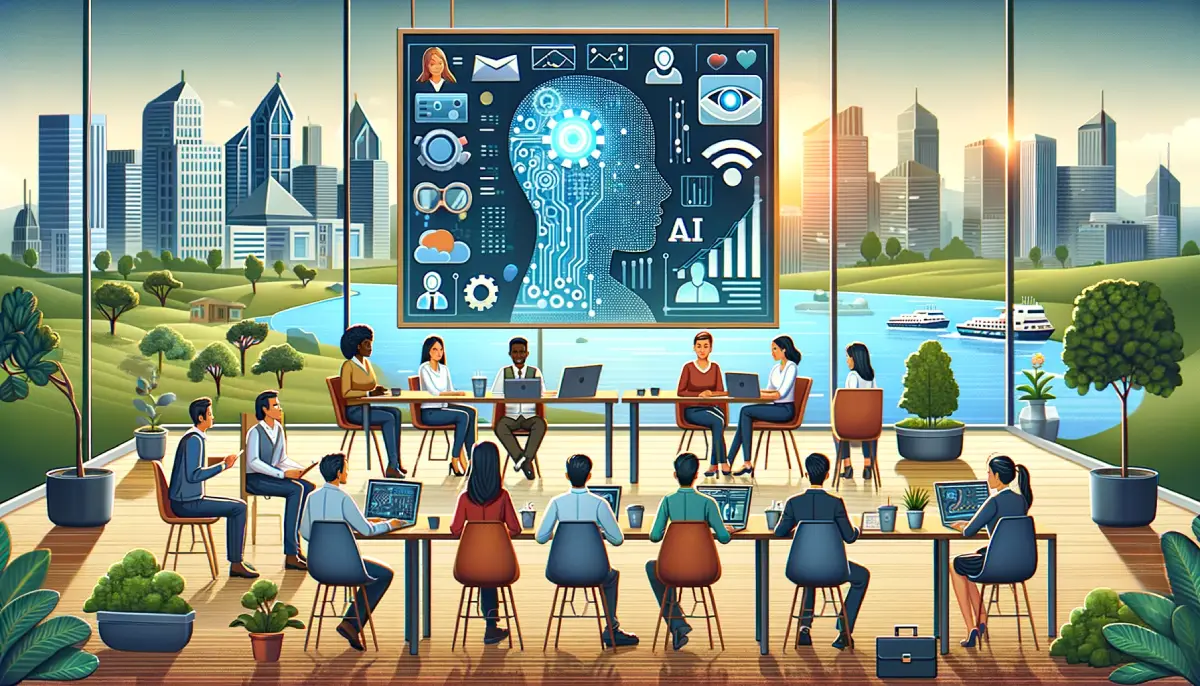
Identifying Suitable Roles for AI
The key to successful integration lies in identifying roles where AI can significantly improve efficiency without compromising the quality of human interaction. Roles that involve repetitive data processing, routine customer queries, and tasks that require high accuracy but little human judgment are ideal for AI.
Training and Adaptation
For human staff, training programs to understand and work alongside AI tools are essential. These programs should focus on managing AI systems, interpreting their outputs, and using these insights to enhance decision-making and customer interactions.
Building AI-Human Collaborative Teams
Creating teams where AI assistants handle data and analytics while human staff focus on decision-making and customer interaction can lead to optimal outcomes. This collaboration can enhance overall productivity, reduce the workload on human employees, and improve decision-making quality.
Future Perspectives: AI and Human Synergy
The future of business operations lies in the synergy between AI and human capabilities. While AI brings efficiency and data-handling prowess, human assistants offer emotional intelligence, adaptability, and creative problem-solving. Balancing these two elements will be key to achieving the highest levels of efficiency and effectiveness in the business world.
For more insights into AI tools and their impact on various industries, don’t forget to check our comprehensive AI Reviews.
In summary, the choice between AI and human assistants depends on the specific needs and nature of your business. While AI offers unmatched efficiency in specific areas, the irreplaceable value of human intuition and adaptability cannot be overlooked. The future points towards a collaborative environment where AI enhances human capabilities, leading to a more efficient, effective, and empathetic business landscape.
